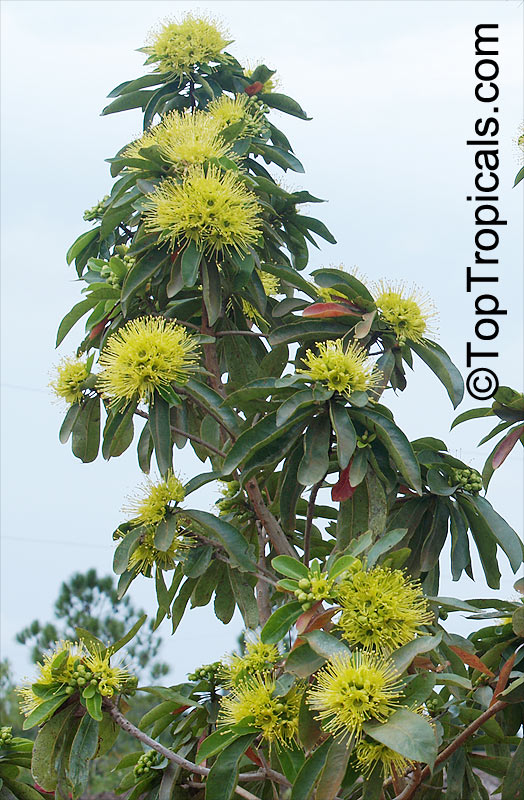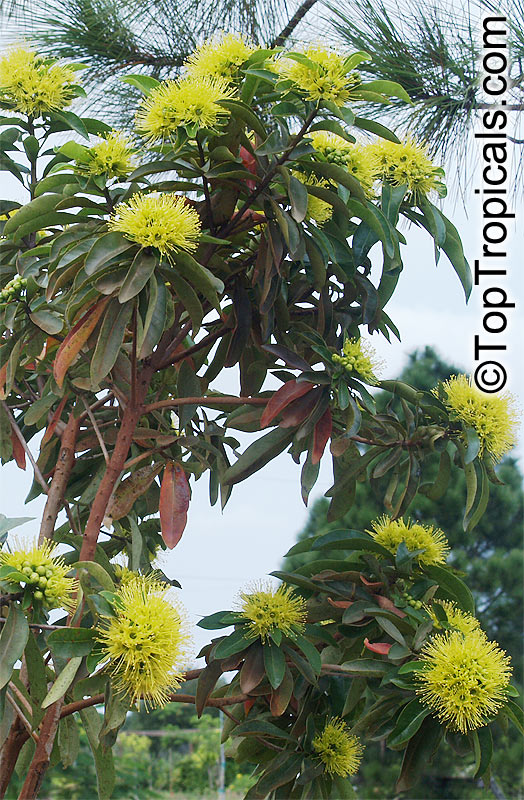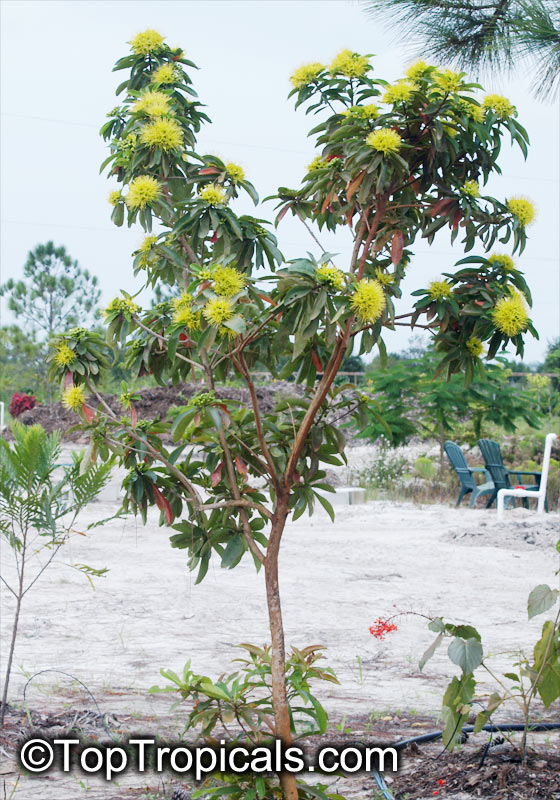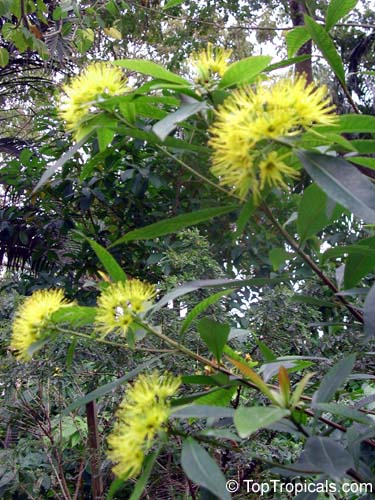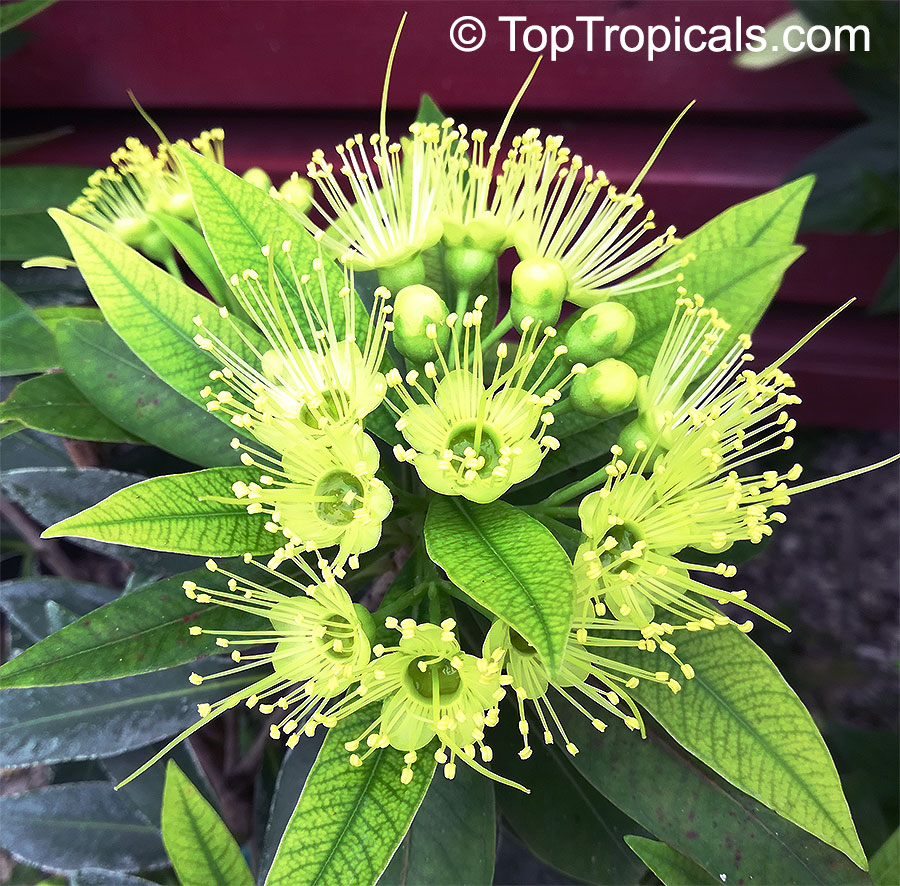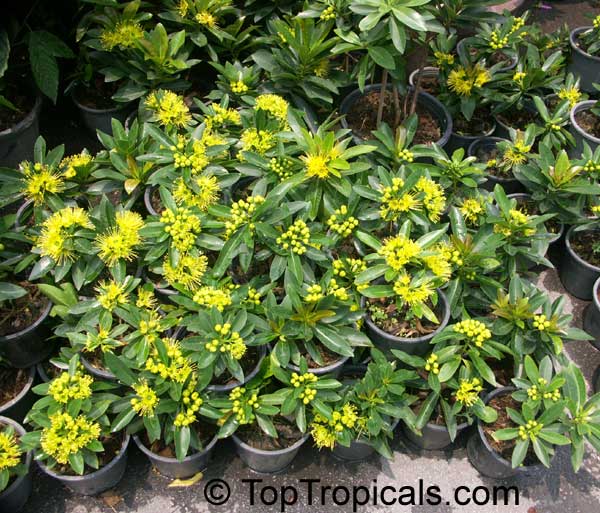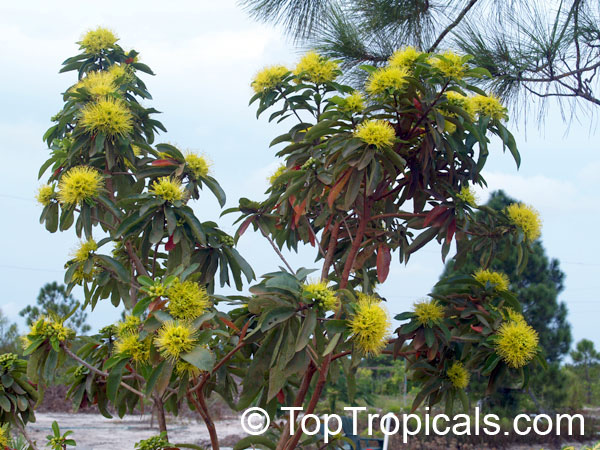Xanthostemon chrysanthus (Golden Penda)
Top Tropicals Plant Encyclopedia
Botanical name: Xanthostemon chrysanthus
Common names: Golden Penda, Expo gold, Junjum
Family: Myrtaceae
Origin: Coastal rainforest in north Queensland from Townsville to Cape York








Xanthostemon chrysanthus, is still quite unknown outside its native country, and is pretty hard to find. This is a very desirable garden plant for warmer climates. The glorious, dense flower heads are well displayed at branches ends and are bright yellow with stunningly extended stamens reminiscent of a Bottlebrush. Flowers are sweetly fragrant and atract butterlies and hummingbirds. Bloom time in Northern hemisphere lasts from winter through early spring, which makes it especially valuable. In sub-tropical and tropical areas it flowers reliably and often within 2-3 years from seed. New leaves start out red, contrasting beautifully with older, lance shaped glossy green foliage. In native rainforest environment the tree can grow up to 40-50 ft, however in gardens it may reach only 15-20 ft. It responds well to pruning and can be easily shaped into a shrub, hedge or screen with annual pruning. Golden Penda is a favorite of birds and butterflies; it makes a good cut flower. The plant is pretty hardy, tolerates dry soil and requires almost no watering once established; however it will thrive providing moist rich soils. It can also take light frosts.
The genus name Xanthostemon comes from Greek xanthos - yellow, and stemon - a thread or stamen. The species name chrysanthus comes from Greek chrysos - gold and anthos - a flower. This plant is known as Junjum among aboriginal Australians, its hardwood used for swords, spear points and digging sticks.
Similar plants: Xanthostemon chrysanthus (Golden Penda)
Ordering seeds info
RECOMMENDED SUPPLIES:
Seed Germination Mix #3, professional grade
SUNSHINE-Epi - Seeds and cuttings booster
SUNSHINE Bombino - Young Plant Booster
Recommended Fertilizer: SUNSHINE Megaflor - Bloom Nutrition Booster
